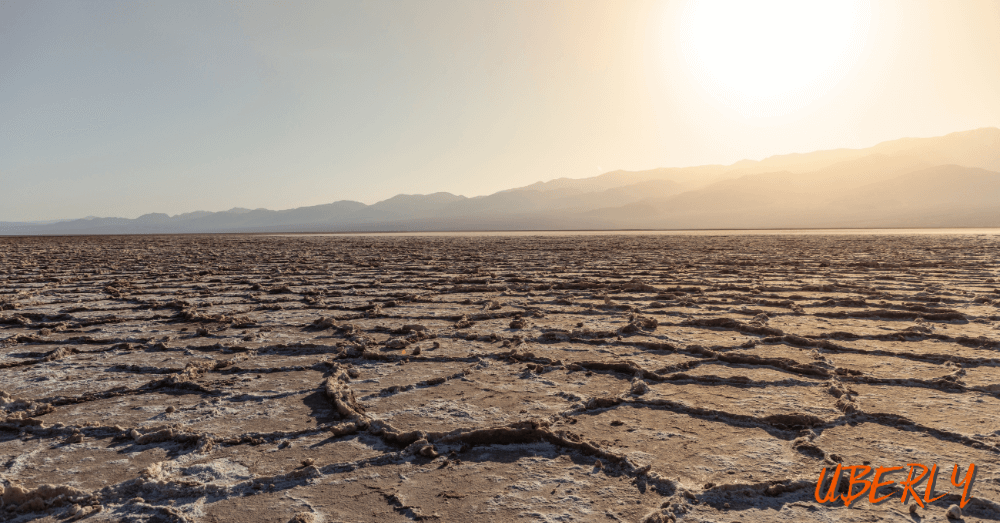Death Valley National Park is an interesting place, known for being the hottest place on Earth and at the driest and lowest elevation in North America.
In 2014, researchers GPS-tagged stones and finally watched them glide across Racetrack Playa. A wafer-thin sheet of ice and light winds did the pushing, ending a century of wild theories. This was finally the proof needed to show that some of the rocks in the area actually drift across the flat desert landscape. It doesn’t seem like there is enough power to propel rocks across the area, but with the right level of friction, made less by ice, the winds in the area can get the job done.
Sailing Stones
For decades, the mystery of the sailing stones was unknown. While Death Valley National Park is the hottest place on the planet during the day, the lack of moisture makes it cold at night. There seems to be just enough moisture to create a thin sheet of ice, allowing stones to glide across the desert floor.
This was a strange phenomenon whose cause was unknown for many years. It didn’t seem to matter the size of the rock, they tend to vary from a few ounces to hundreds of pounds, and can be pushed across the desert floor as if no force is acting upon them. Strangely, nobody had ever seen them actually move in person, which seems odd, but trails were left behind to mark the change of location.
Where do the rocks come from?
As with any mountainous area, what was once up must eventually come down. Thank you gravity. The rocks of Racetrack Playa are composed of dolomite and syenite, which are the same materials making up the surrounding mountains. These rocks tumble down to the desert floor thanks to erosion. This means they rest on the ground below. Somehow, these rocks move horizontally along the desert floor, leaving tracks behind them.
Bottoms matter
The underside of each rock has something to do with the trails that are left behind. Some of the largest rocks have left trails as long as 1,500 feet, which means they moved a great distance from their original position along the desert floor. Rocks with a rough bottom tend to leave straight tracks, while rocks with smoother bottoms seem to wander. These sailing stones have been observed and studied since the early 1900s, with several theories that suggested an explanation for why they mysteriously move along the desert.
Racetrack Playa, the perfect place
Most people might think that deserts are mostly made of sand, but that would only be partially true. Most deserts are covered in dry, brown vegetation that has adapted over time to survive. That’s not the case at Racetrack Playa.
At one time in history, there was a lake that covered the area, which helped create the smoothness of the flat surface. As the lakes dried up in the Death Valley area, the result of the drying effect left an area that’s cracked into patterns and extremely flat.
This location between the mountains is one of the flattest places on the planet, and it doesn’t have vegetation to prohibit the movements of the sailing stones along the desert floor. This makes the area unique and interesting, especially when you see the long trails left by the stones as they move.
The movements captured
In 2014, scientists captured the movements of the stones along Racetrack Playa for the first time ever. They used time-lapse photography to see how the stones moved. These photos suggested the sailing stones were the result of a perfect balance of ice, water, and wind, which is why the stones only seem to move during the night.
During the winter of 2014, rain formed a small pond that froze overnight and thawed the next day. This created a massive sheet of ice that was barely noticeable by the middle of the next day. It only took a light wind to make the stones move during this event thanks to the sheet of ice breaking up and pushing the stones forward.
Can you see the rocks for yourself
Death Valley National Park is open to the public, but Racetrack Playa is a place where you need to be careful not to disturb the delicate balance of the sailing stones and their pathways. This location is two miles south of the Grandstand parking area, and the exact location of the stones is always changing.
Usually, you can see the stones by walking about a half-mile toward the southeast corner of the playa. It’s important that you don’t disturb the rocks or their tracks. If it has rained recently, the playa becomes muddy, which means you need to be careful to avoid approaching the rocks and leaving footprints during wet conditions. If you’re careful, you’ll be able to see the rocks and the paths they leave, which can make for some great photos captured while visiting the area.
Will you visit Death Valley National Park to witness these stones and their movements? You can see the trails behind the stones as they move, but need to be careful not to disturb them. It’s easy to reach the area and see the sailing stones of Racetrack Playa, giving you a glimpse into one of the many world’s mysteries.
